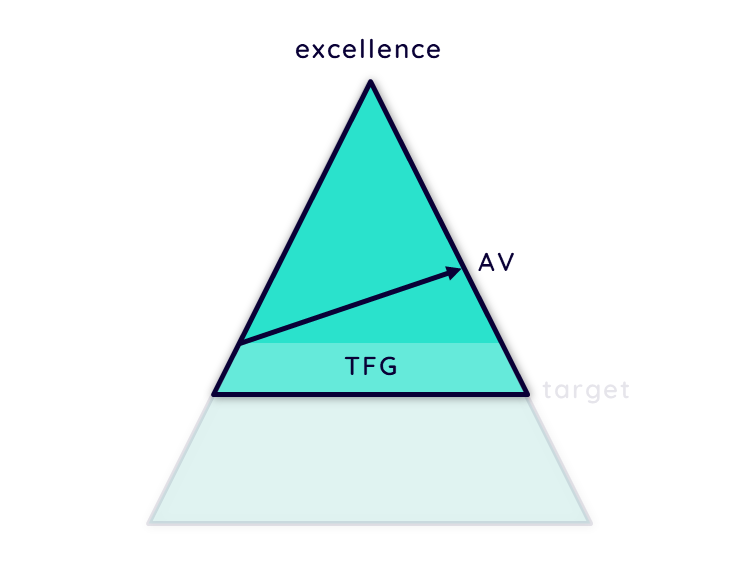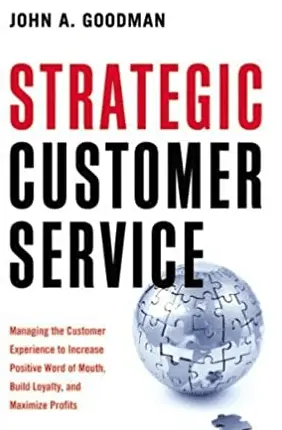
audio 1
I was recently talking to a friend about his family trip to a local zoo. I asked him how it had been, and then listened to a list of complaints – about the toilets, catering facilities, lack of clear signs, and the distance from the car park. I then said: “ok – but how were the animals?” – “oh, they were brilliant”, he replied.
video
The Strategic Customer Service Grid provides an overview of what needs to be done to provide excellent customer service across the whole of your organisation. This 2 x 2 grid emphasises four crucial elements that need to be attended to to provide excellence. The first is to recognise that every aspect of your service matters. Your business is likely to consist of two distinct elements: core and ancillary. ‘Core’ relates to the main purpose of your business: if your business is to run a zoo, your core service will be the acquisition, upkeep and presentation of the animals. ‘Ancillary’ relates to all those other services you provide to support the core and your visitors or customers. Again, using the zoo as an example, ancillary services would include catering, toilet facilities, car parking and signage. What is important to recognise, strategically, is that, as far as the customer is concerned, they expect high standards of service whether the service is core or ancillary. And because, for many service providers, their focus is on the core, they may pay insufficient attention to the ancillary services. The two other boxes in the grid refer to the level of service provided: TFG and AV. ‘TFG’ stands for ‘Taken For Granted’. These are the minimum expectations customers have, for both the core and ancillary services. In zoo terms, they expect the animals to be brilliant – and the toilets too! TFG is an important concept, because customers ‘take for granted’ the level of service they expect. It doesn’t excite or delight them – in fact, they don’t even notice or comment about it – because that level of service is, literally, taken for granted’. It only becomes an issue when what is ‘taken for granted’ isn’t provided. No customer ever praises or acknowledges what is a taken for granted. It only has an impact when it is missing. For example, if the zoo advertises it will be open from 9am, and it is, then no customer will acknowledge that or say thank you: it’s a taken for granted. But if there was a delay in opening, and it didn’t open until 9.10, then that would be noticed, and be a potential source of complaint. If you keep a log of customer complaints, then have a look at them. They will all be TFG failures – a service that the customers expected, that were taken for granted – but weren’t delivered. The second of these two boxes refers to AV – added value. These are services and features provided that were not expected, but nonetheless delight the customer – and so provide added value. For example, a clown doing magic tricks in the refreshment area, to entertain younger children – at no extra charge (for anything to be added value, it has to be seen as ‘free of charge’.) So, strategically, the message is clear: work to deliver all TFGs, and seek to improve the customer’s’ satisfaction by ALSO creating AVs. So when you put the two sets of boxes together to form the final grid, the strategic requirement is clear. Make sure you identify, then deliver, all TFGs across both the core and ancillary services; and constantly seek to delight the customer by finding then delivering added value in both the core and ancillary service areas. Another way of talking about TFGs and AVs is to see the former as organisational standards, and the latter as organisational targets. Everyone in the organisation should know what the TFGs are in their work area, and set them as standards to be delivered and maintained. They should also be encouraged to find and deliver added value as targets – aspirations rather than expectations, but crucial to delighting the customer, making it a memorable experience rather than merely a satisfactory one, and an experience they are likely to recommend to others.
The Grid...
... a powerful and simple tool for a strategic approach to customer service excellence.

video
It’s really important to realise that once you have provided added value to a customer, then that customer will assume that level of service is now ‘taken for granted’. So an AV only impacts once on the customer as an AV; thereafter it is a TFG. And so the quest begins again to find a new AV for that customer. And that is how customer service continuously improves, step by step – AV to TFG, AV to TFG. Great companies know this, and use it to consistently achieve and improve, excellence. In this context, beware the ‘one offs’ or ‘special offers’. Unless you tell the customer that that’s what they are, the customer will assume they are now standard, and part of the service to be expected. Getting to the top – achieving world class status – means climbing above and ahead of the competition. The way to do this is to use TFGs and AVs. Start by identifying your TFGs, and meeting them; then find AVs and deliver them. As a result, they become the new, improved TFGs; so find some more AVs, and deliver them, and as a result, set even better new TFGs. And so on. If excellence is your goal, never assume that delivering TFGs alone will be enough.
TFG + AV = excellence
Another video, to get you to the mountain top...

audio
As the flip boxes show, what is externally expected by the customer – a TFG - should be an internal standard – a guarantee; and what is above and beyond, something to delight the customer – an AV – should be a target All staff should know what standards are required, and be on the lookout for targets that, if achieved, will delight the customer.
Standards & Targets

Standards
designed to match the TFGs
... get them right, or get a complaint

Targets
designed to match the AVs
... get them right, and delight the customer
Is 'Good' ... Good Enough?
want more?...
Rowan Atkinson’s Customer Service
Love Actually
Just a hilarious reminder that the customer should be in charge of the service level required…and the need for the staff member to listen, observe, respond…watch on youtube.com
Experience This!
Coleman & Gingiss
Different leaders as guests sharing their views on successful customer strategies
listen on... open
Strategic Customer Service
John A Goodman
One of the few books that takes a strategic approach to customer service
keep reading... open




